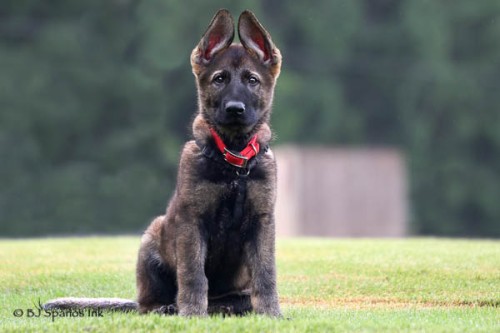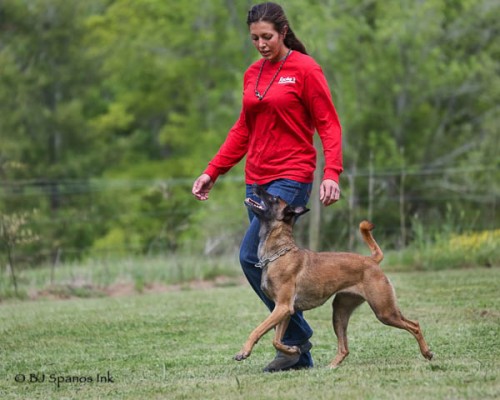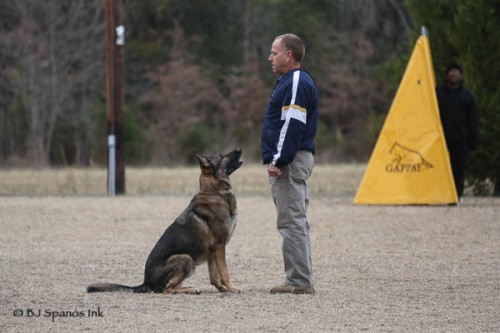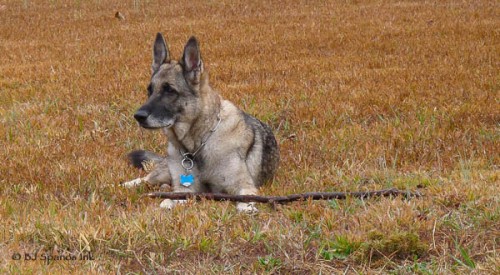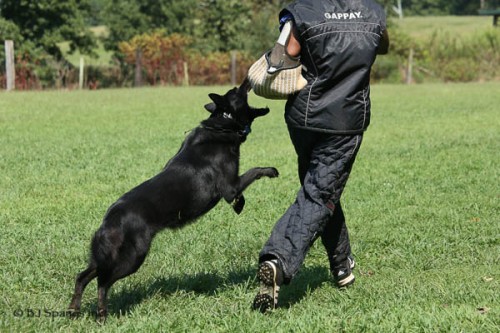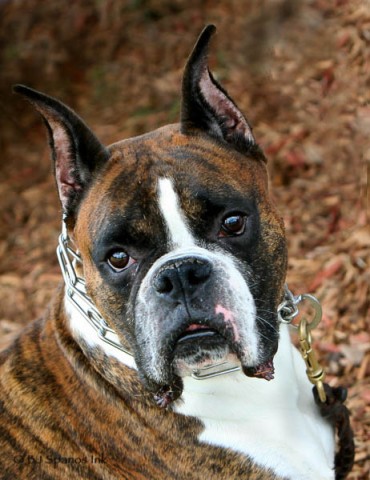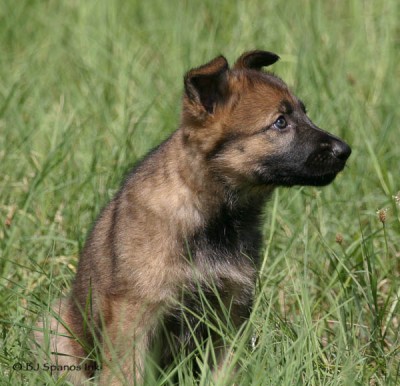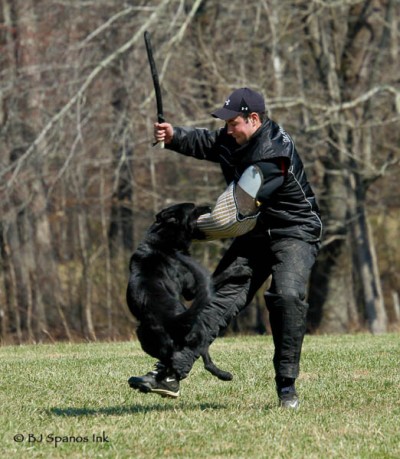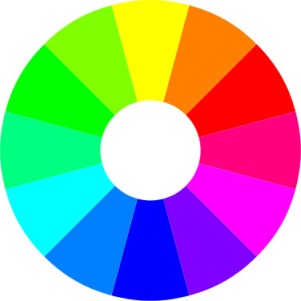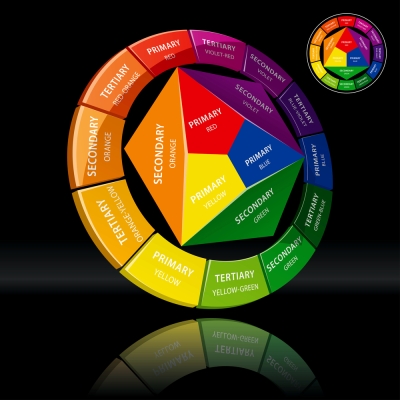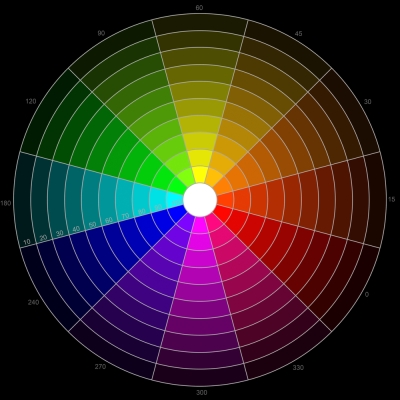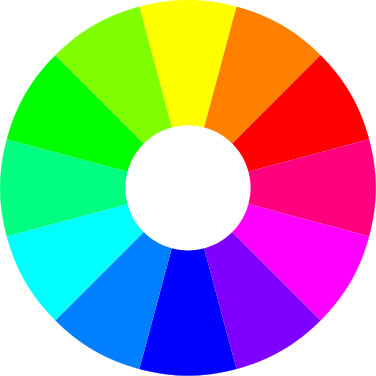Color theory is all fine and good, but how can IPO photographers use color effectively in their images? We may not have control over the setting as landscape, commercial and portrait photographers do, but we can be aware of the setting we are in and take advantage of the colors that are there. We also can educate handlers and helpers about their clothing choices to create the best chance for getting the shot.
Consider the following examples:
This is one of my favorite images and has been featured in recent posts. The story here is a puppy contemplating his future life. The green says calmness and serenity, but the puppy’s expression is not all that calm and serene. He’s way too serious and just a bit worried! The red collar draws the viewer’s eye up towards the puppy’s face.
This is another favorite image, which like the image above features red and green, along with blue. This is a classic color combination! I would recommend this color combination to any handler. Also, notice the yellows in the background; nice highlights to what otherwise might be a boring, monochromatic background.
This image was taken in the winter, at a field devoid of much color. In taking this image, I choose to frame the dog and handler to the left of the yellow blind. The power pole also provides a frame, but I usually prefer to take power poles out as they are not very attractive. What is cool about this image is how the yellow strip on the handler’s arm picks up the yellow from the blind. His shirt also is a nice contrast to the background and his dog, as are his khaki pants. Another good color combination for handlers. Notice the handler by the blind kind of disappears into the background, thanks to dressing in black. That’s okay for this image, but might not work as well as the primary subject. More about dressing in black a bit later in this post.
This is another example of a winter scene. The pasture’s grass features various shades of orange, along with a bit of green here and there. I like how the brightness of the grass allows the dog to stand out from the background. It is monochromatic, but it works, because it’s unusual to see shades of orange in a grass pasture and the color tones and shades are harmonious.
Back to summer. Green grass provides a wonderful contrast for black dogs! Taking this image from a position that shows the dog against the green grass and not right up against the helper, who is also in black, captures the action without muddying things up. There is also some red along the fence line, which adds a little interest and framing.
Although handlers and helpers love to wear black, it isn’t a great choice for photography as there is no contrast. Remember, black absorbs all light. As a result, a black dog and the handler’s and/or helper’s leg will likely meld together, without much definition or detail.
This is also true for white, which reflects all light. Very often, the white tends to blow out and all definition and detail is lost, not only in the white area, but also in the surround pixels. Many times, I will expose for the dog and then in post-processing separately adjust different areas of the image, such as the dog, the handler and the background. It takes more time, but it’s worth it, especially with those “money” shots.
This image is a very good example of a monochromatic image. I really like the image of the dog, but the background and dog are a little too close in color. As a result, the dog tends to blend in with the background. The white along the dogs chest, neck and muzzle offers a nice contrast, however. For this image, consider placing the dog on another background or change the background color in post-processing.
Puppies are fun to photograph as they have great expressions. The puppy stands out nicely from the green grass, but also notice the puppies hazel eyes. Are you seeing a pattern here of how a single color can provide a focal point and/or highlight?
And, finally, this image illustrates what happens when a black dog and a helper in black are photographed one on top of the other. It’s hard to see the differentiation between the dog and the helper’s leg. It is good that the field and trees contrast with the helper and dog.
In closing, I encourage you to take the time to survey the field and think about how to use the available color to enhance your images. I also encourage you to explain to handlers and helpers how wearing contrasting colors to their dogs really helps you take high quality, dramatic images of their work. Helpers may not have a lot of options, as scratch pants most often come only in black, but handlers do! It’s worth mentioning, even if they do look at you like you’re nuts.
Until next time, Happy Shooting!
